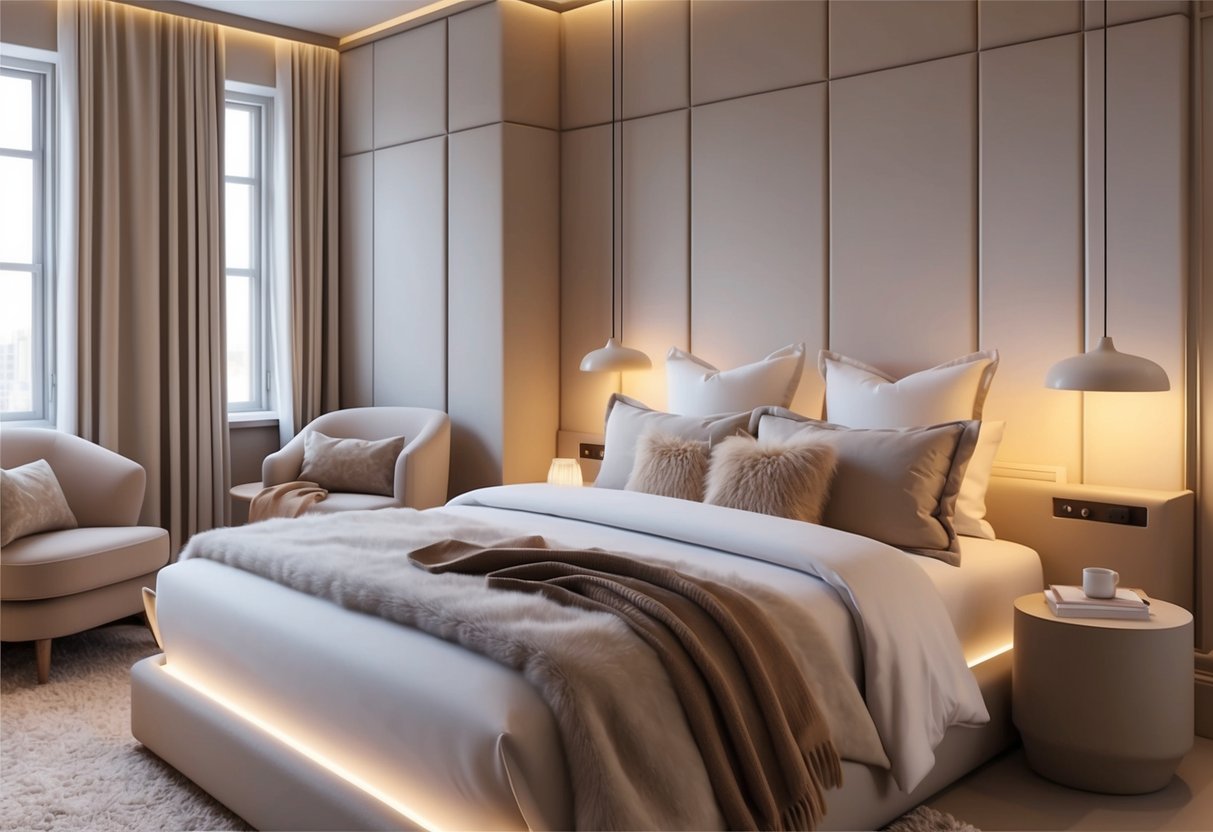
Selecting Comfortable and Quality Bedding
The right bedding plays a crucial role in creating a relaxing and peaceful retreat. Comfort and quality in sheets, pillows, and blankets help support deeper rest and contribute to consistent, quality sleep.
Choosing Comfortable Bedding
Comfortable bedding starts with selecting the appropriate materials for each season and personal preference. Softness is often prioritized, so cotton and linen sheets are popular for their breathability and gentle texture.
For warmth in colder months, many choose flannel or microfiber for their cozy feel. Pillow selection also affects overall comfort and spinal alignment.
Memory foam and down-alternative pillows are favored for their support and adaptability. A plush comforter or duvet, paired with a lightweight throw, adds layers of comfort that can be adjusted as needed.
Bedding must also fit the mattress properly to avoid bunching or discomfort at night. Texture matters.
A blend of different weaves—like sateen or percale—offers personalized tactile experiences, enhancing both the coziness and the look of the bed. For more details on how various textiles and plush additions create an inviting environment, visit this guide on designing a relaxing and tranquil bedroom retreat.
Investing in Quality Bedding
Selecting high-quality bedding materials contributes to durability, ease of care, and the promotion of restful sleep. Fabrics with a higher thread count or tighter weave tend to last longer and feel smoother against the skin.
Look for certifications like OEKO-TEX or organic cotton, which indicate safer, more sustainable production processes. A quality mattress protector safeguards bedding investment and prolongs the life of sheets.
Quilted or hypoallergenic options also protect against allergens, helping keep sleep restful over time. Long-lasting comfort comes from bedding that holds its shape and doesn’t pill or fade quickly.
Reputable brands may cost more upfront, but often provide better return on investment through superior performance and comfort. Explore more suggestions for building a relaxing bedroom retreat with quality bedding, including top picks for sheets, comforters, and covers that enrich the sleep experience.
Utilizing Natural Materials for Relaxation
Natural materials and thoughtfully layered textiles can significantly enhance relaxation in any bedroom. Wood, stone, linen, and cotton all contribute to both soothing aesthetics and a comfortable environment.
Incorporating Natural Materials
Using natural materials like wood and stone adds warmth, grounding, and textural interest. A solid wood bed frame, nightstands, or benches instantly bring a sense of robustness and calm.
Even small touches, such as a wooden tray or a stone-inspired lamp, introduce organic beauty and tactile variety. Adding potted plants improves air quality and brings a sense of freshness.
Plants such as snake plants or peace lilies are ideal for low-light bedrooms and help create a serene retreat. Incorporating woven baskets or bamboo accessories is another way to introduce subtle earth tones and enhance the feeling of tranquility.
These details all work together to foster a peaceful atmosphere; more inspiration is available on this peaceful master bedroom guide.
Layering Textiles for Comfort
The choice of textiles directly influences comfort and serenity. Soft bedding in linen or cotton encourages relaxation by being gentle on the skin and breathable throughout the year.
Quilted throws, upholstered headboards, and area rugs provide extra softness and a sense of enclosure. Mixing textures is key: combine smooth cotton sheets with chunky knit throws or velvet cushions for a nuanced but inviting look.
Incorporate neutral or pastel tones in your textiles, as these shades evoke calmness. Use blackout curtains or linen drapes to help regulate light, promote restful sleep, and add another tactile element—learn more practical textile tips for a restful retreat at this bedroom retreat guide.
Lighting Solutions for a Peaceful Atmosphere
Lighting plays a critical role in transforming a bedroom into a tranquil retreat. Incorporating both natural and soft artificial lighting options can create a balanced and comfortable environment.
Maximizing Natural Light
Natural light can make a bedroom feel brighter, more open, and significantly more calming. Sheer curtains or light-filtering blinds allow sunlight to enter while minimizing harsh glare.
Positioning the bed and key furniture to take advantage of the sun’s path encourages a soothing, naturally lit space. A light color palette on walls and ceilings helps reflect daylight and make the room appear more spacious.
Using mirrors strategically on walls opposite windows can maximize sunlight by bouncing light further into the room. Keeping window sills free of clutter allows for uninterrupted light flow.
Tips for maximizing natural light:
- Use sheer curtains or blinds instead of heavy drapes
- Keep windows clean
- Place furniture to avoid blocking windows
- Add a large mirror opposite the main window
When possible, incorporate additional windows or skylights during renovations to boost light levels. Large windows not only brighten up the space but can also improve mood and overall well-being.